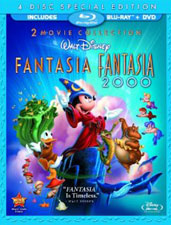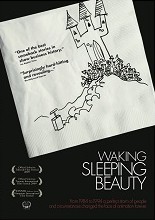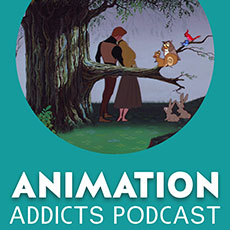Does Don Hahn really need an introduction?
Certainly not. So you can imagine the excitement that was mine when interviewing the man who’s produced so many masterpieces, about two of his most intriguing and exciting productions: Fantasia 2000, the magical, animated musical event debuting in highly anticipated Blu-ray, and the documentary Waking Sleeping Beauty that tells the true story of the renaissance that took place between 1984 and 1994 at the fabled Walt Disney Animation Studios and explains how Disney animation regained its magic with a staggering output of hits including The Little Mermaid, Beauty and the Beast, Aladdin, The Lion King and more.
Here’s our conversation…

Animated Views: Walt Disney’s Fantasia established animation as an art on its own. Better, it showed that classical music could be interpreted and understood differently through that new artistic form. How did Fantasia 2000 resume Walt’s vision and even developed it?
Don Hahn: Well, the original approach, as you know, was to create a concert feature in making a real concert so that every time you saw it it might change a little bit. Fantasia 20 years or 30 years later might have had familiar pieces along with some new pieces. Of course, the war and so many elements changed that, and that idea never really happened until the 1990s. I think the essence of Fantasia 2000 is still the same as it was: looking at pieces of music and finding out how to interpret them visually. Sometimes that’s abstract, sometimes that’s non-narrative abstract, without having to create a plot, and on other times, the music really suggests a plot. So, I think Fantasia 2000 is just like the original Fantasia as we tried to do both. We tried to create sequences that were with abstract forms and color and light shapes, and other sequences that were very much about telling a story.
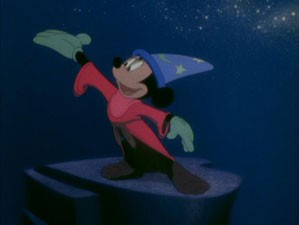
AV: How come that the end of the 90s appeared to be the right time for a new Fantasia to be created?
DH: The genesis of it was really the home video boom because people were buying VCRs and VHS cassette tapes, and the Studio desperately wanted to release Fantasia just like Show White on videotape. Then, Roy Disney wanted to reinvest that money to create new Fantasia pieces. I think Roy was really the cheerleader behind all that. Another thing, too, was that Fantasia 2000 was done between movies. So, you would have animators working on Aladdin, and Beauty and the Beast and Little Mermaid, and then in the gaps between those movies, they would get a chance to work for a few months on Fantasia 2000, as a really refreshing break from the longer movies. They would spend about three months on Fantasia and then go back for a year on another project.
AV: Another production of yours that is now available on video is the documentary Waking Sleeping Beauty, about that animation renaissance of the 90s. Why this idea of Disney’s talking that way about its own history?
DH: I feel like we wanted to make it – I wanted to make it – because it was a very special time when not only interesting movies were made, like Roger Rabbit and Beauty and the Beast and Aladdin, but also it was a time when the culture of Disney changed a little bit. It was about technical innovation, it was about bringing new people like Howard Ashman, and it was a real creative boom time in the Studio, that contributed to those movies. So, I wanted to tell that that story, and preserve that story. It wasn’t so much a need on the company’s part than it was a desire and a passion on my part and certainly Peter Schneider, who produced the movie with me, to preserve that story. Because, you know, if you don’t learn from history, you’re about to repeat it and I think there was some really great things, and not so great things that happened during that era that were worth documenting.

AV: How do you explain that the heart and soul of the company that Walt built experienced so many ups and downs, up to being threatened of closing?
DH: It was threatened of closing once, back in the 1990s, and even then, I’m not sure it was really threatened of closing. But you have to remember: it is not just animation. It’s also show business. These films are expensive and they have to be profitable, and they have to be good. For a while, we would make movies profitable and, frankly, that weren’t good. Movies like Black Cauldron were creative and financial disappointments. So, I think you can’t just keep an institution going because it’s always been there.
And Roy Disney himself says that in Waking Sleeping Beauty. He says: “if you’re just gonna keep it going the way it is, you’d better be running a museum.” And who wants to do that? Roy himself was very positive about bringing in new talents, exciting talents, people like Howard Ashman and Alan Menken, to revitalize the Studio. Any art form has its ups and downs, music, rock ‘n’ roll, impressionist painters, any art form. Animation is the same way. It certainly has its ups and downs. And that’s part of what Waking Sleeping Beauty is about. It’s about a group of people who wanted to push ahead. Not just save an art form, but create a new, refreshing version of that art form that’s still here alive today.
AV: Now, with Princess and the Frog and Tangled, do you think we are at the dawn of a new golden age of animation?
DH: Yes. It’s a really good time for animation, right now. Even if you look broader, beyond the walls of Disney, if you look at Pixar and DreamWorks and Blue Sky, all the animation that’s being done right now. There’s a category for animation at the Academy, there’s 15 or 16 animated films released every year, and amazing international talents like Miyazaki and others. I think it’ll take the time to put it in perspective, but I do think it’s a real golden age happening right now. Animation has never been more profitable, never been more successful – if you look at Toy Story 3 – financially and artistically.
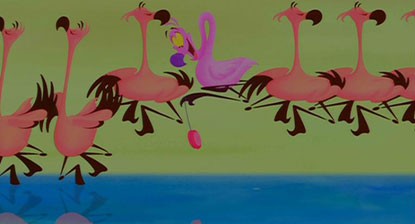
AV: After Fantasia 2000, there were plans for another one, entitled Fantasia 2006, which would have been more world music oriented, with shorts like One by One and The Little Matchgirl, but which never made it as a whole. Do you think that, with that new golden era emerging, there is room for launching a new Fantasia?
DH: There’s no discussion about it at all. But what’s interesting in Pixar is that they’ve often made shorts and have developed new talents with those shorts, and that’s what Fantasia is – a series of shorts. There’s no plan to do a new one, but it’s always a possibility. What’s great about Fantasia is the artistic liberties you take. Like in Carnival of the Animals with the watercolor style, and the flamingos and the yo-yo. You may not do it a whole feature, but you can take there amazing artistic liberties in a shorter form and make it entertaining. It’s very much like a Pixar short. You look at the Pixar short, they take a lot of risks artistically and still are very entertaining. So, who knows if there will be another Fantasia, but the spirit of it is so much around…
With all our gratitude and admiration to Don Hahn. Very special thanks to Dre Birskovich.



